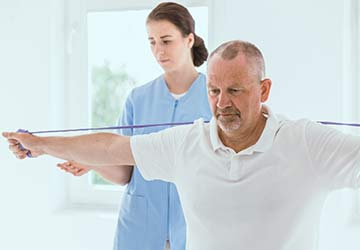Columbia Personal Injury Lawyers
Numerous people are injured seriously in accidents each day in Columbia alone. The term “personal injury” encompasses a broad range of accidental injury that may occur in a variety of preventable ways. From stores, to hotels and restaurants, to recreational facilities, nursing homes, and other medical facilities, third parties may sometimes be responsible for the injuries that victims sustain. If you or a loved one has been injured and feels the injury is the result of the conduct of a third party, contact the Columbia personal injury lawyers at Strom Law Firm, LLC today to better understand your rights.
Types of Personal Injury Accident Claims
There are many different types of accidental injuries, and different cases require unique approaches to fully understand what happened and who might be responsible. Strom Law Firm’s experienced and skilled Columbia personal injury lawyers have spent their careers successfully taking on and managing cases that arise from a variety of circumstances:
Common Personal Injury
Car collisions
After being in a Columbia car accident, it is important to take steps to protect your rights, like calling the police, seeking medical attention immediately, and notifying your own insurance company that an accident has occurred. You should also contact the experienced Columbia Personal Injury Lawyers at the Strom Law Firm, LLC.
Having Columbia Personal Injury Lawyers from the very beginning of a case can help you to manage insurance companies who may contact you early to either ask for statements or attempt resolution when you have not received full and complete treatment for your injuries. Suppose you are approached by the at-fault driver’s insurance company either for information related to the accident, or with an early attempt to resolve the case. In that case, the Columbia Personal Injury Lawyers at the Strom Law Firm, LLC can review that offer and determine if the offer takes into account the full scope of your injuries, both past, present, and future.
Slip and falls
Slips, trips, and falls are among the most common personal injury accidents and can often be caused by the negligence or carelessness of another person or a business owner. Businesses and homeowners have certain responsibilities to keep their property safe for visitors and guests, and can be responsible for accidents caused by conditions or events on the property. Falls can often cause catastrophic injuries, and, in certain populations, including the elderly, can even be fatal.
It is important to speak with Columbia Personal Injury Lawyers following your slip and fall, because, at the time of the accident, you may not realize someone else had responsibility in causing the fall. Whether you’ve slipped on a wet floor in a grocery store, tripped over a raised sidewalk, fallen on a tire stop, or encountered a broken handrail or other condition that was not otherwise obvious because of paint, or a curb, or suffered a slip and fall in any number of different ways, contact the slip and fall attorneys at Strom Law Firm immediately to discuss your slip and fall today.
Motorcycle accidents
Even the most skilled and experienced riders can be involved in a motorcycle accident resulting in serious injuries on the Columbia, South Carolina roads. Common injuries suffered after a motorcycle accident include road rash, broken bones, traumatic brain injury and spinal cord damage. Sadly, these accidents can be fatal, leaving families behind with unpaid bills and the loss of a loved one.
Rarely will a motorcyclist not need medical treatment following an accident. They often require transport by emergency medical services (EMS) to a hospital. Medical bills and other expenses add up quickly. Fortunately, an injured victim may be entitled to compensation from negligent drivers and other parties.
Boating accidents
Boating accidents in Colombia can often lead to injuries and even deaths. The following list represents instances where a boater may cause an accident leading to personal injuries:
- The operator was inattentive due to his phone or others on the boat.
- The vessel had mechanical issues that were ignored.
- The boater was under the influence of drugs or alcohol.
- The boater was moving too fast.
- Failure to keep a proper lookout
- Inoperable lights or failure to use lights
- Boat operator inexperience
While South Carolina does not require boat operators to carry insurance, many boaters do. It is important to hire Columbia Personal Injury Lawyers to work towards securing compensation from boat owners and their insurance policies when you or a loved one is involved in a boat accident resulting in serious bodily injury or death.
Trucking accidents
Truck accidents refer to accidents involving multi-axle vehicles, such as big rigs or eighteen-wheelers, whose overall weight is far in excess of that of a regular vehicle. Trucking accidents are among the most common, leading to significant and permanent injuries, and can arise from a variety of factors due to the unique nature of the trucking industry. Truckers may be on the road for too long, overworked and tired, and, as such, may make mistakes.
An eighteen-wheeler’s size and weight make it capable of destruction when accidents occur. Whether an accident is caused by a driver’s carelessness, a decision by a trucking company to put an unqualified or overworked driver on the road, by a maintenance problem, or by a defect in the truck or cargo’s manufacturing, those responsible must be held accountable.
Bicycle and pedestrian accidents

- Aggressive drivers.
- Failure to yield a right-of-way.
- “Dooring.”
- Impairment.
- Poor visibility.
If you have been involved in a bicycle accident or have otherwise been harmed by the carelessness of a driver on Columbia roadways, consult an experienced Columbia bicycle accident injury attorney. A pedestrian accident lawyer or motorcycle accident lawyer may be essential to serving as protection from insurance companies trying to settle quickly with you.
Additional Areas for Columbia Personal Injury Lawyers
- Medical malpractice – Every year, medical providers make significant and sometimes life-altering mistakes. Whether injured during surgery, diagnosis, or routine care, hospitals, practices, doctors, nurses, and other clinical and administrative staff who fall below the standard of care should be held accountable by our Columbia Personal Injury Lawyers.
- Bus accidents – When a bus is involved in an accident, whether with another car or a pedestrian, significant injury can occur.
- Nursing home abuse – Nursing home abuse and neglect may present itself in several ways. All can cause significant physical, mental, and emotional damage to vulnerable victims.
- Physical Neglect
- Failure to provide services
- Failure to adhere to a plan of care
- Financial abuse
- Physical altercation
- Sexual battery
- Emotional abuse
- Premises liability – More than just slip and falls happen thanks to unsafe conditions in stores and on other people’s property. Dog bites, drowning, falling objects, hazardous conditions, and allowing dangerous activities, etc. can all lead to significant injury, and can be the result of failures on the part of homeowners or proprietors.
- Dangerous prescription drugs
- Dog bites – Too often, individuals who take every preventative measure are still bitten by dogs. Many of those bites can be very severe.
- Defective products – Flawed products are put in the market all the time. When products cause injury or are likely to cause injury and are made available to the public, the manufacturers, distributors, and retailers of those products must be held accountable.
Common Injuries in Personal Injury Claims
Our Columbia accident injury clients suffer from a variety of injuries. Some victims have their entire lives altered or even ended by the mistake of another person. Our Columbia personal injury lawyers have experience representing clients suffering from:
- Spinal cord damage
- Traumatic brain injuries
- Broken and fractured bones
- Internal bleeding
- Sprains
- Soft tissue injuries
- Neck injuries and back injuries
- Burns and lacerations
- Loss of limbs
- Wrongful death
- Birth Injuries
- Class action lawsuits
10 Columbia Personal Injury Lawyers FAQ
However, sometimes these accidents in Columbia, South Carolina, can result in disastrous outcomes, leading to not only debilitating injuries and skyrocketing medical bills, but also immense worry about what the future holds for the victim and their family.
If you have been harmed in an accident in Columbia, you most likely have numerous questions and concerns about what you need to do, who you need to call, and how you can get the legal help you require.
This blog post will discuss some of these frequently asked personal injury questions, and hopefully provide you the answers you need to get through this traumatic ordeal.
1. What are the most common types of personal injury cases handled by Columbia Personal Injury Lawyers?
Personal injury is a broad term encompassing many types of conduct and accidents. Below are commonly reported personal injuries.
- Motor vehicle crashes: If you are injured in a motor vehicle accident as a passenger, driver, or pedestrian, you may be entitled to compensation for your financial losses and injuries.
- Product liability accidents: Defective or dangerous products, devices, and equipment can cause severe problems. These product liability cases tend to result from improper warnings, hazardous products, defective medical devices, faulty vehicle parts, and toxic substances. Those responsible for these defective products and equipment can include businesses, individuals, and even governmental entities that designed, sold, or manufactured the defective product.
- Slip and fall incidents: If you are injured because you slipped and fell on private or public property, you may be entitled to compensation. These accidents involve the safety of the environment and whether the property is unreasonably dangerous to others.
- Nursing Home Neglect or Abuse: Each year, nursing homes across the state are alleged to have engaged in practices falling below the standard of care owed to residents of these long-term facilities. The level of care increases with the skill level of the facility and requires at least some monitoring by the facility’s staff and personnel. If you or a loved one feel you have been the victim of inadequate or improper care in a nursing or long-term care facility, you may be entitled to compensation for your losses.
- Medical malpractice: Medical providers make hundreds if not thousands of yearly mistakes. Some of these mistakes, however, fall below the level of care the provider is required to uphold. When a preventable mistake falling below the threshold standard occurs, and it results in serious injuries, you can seek legal recourse for the harm caused by the error.
- Pharmaceutical malpractice: From overfilling to filling the wrong script to filling an improper dose, pharmacists are responsible for filling billions of scripts each year and make numerous mistakes. If a pharmaceutical mistake, whether based on filling, training, oversight, or management, has occurred, causing injury to you or a loved one, you may be entitled to compensation.
Discussing your case with our experienced Columbia Personal Injury Lawyers can help you feel supported and can further help you to navigate the complexities of your potential claim.
2. What steps should I take if I suspect my injuries were caused by a preventable personal injury accident?
After you have sustained an injury in Columbia, South Carolina, your next steps may be pivotal in the event of a future legal claim. While every case is unique, consider some of the following steps:
- Contact 911: After a motor vehicle accident or if you have fallen and require immediate medical care, you need to call 911. Police officers and emergency medical personnel cannot provide valuable assistance, but they will typically create reports of their observations of the scene, gather names of witnesses, and provide valuable information for a legal claim down the road.
- Gather evidence: Collect names of potential witnesses, take photos or videos of the scene or condition, including any skin condition, or images of any visible injuries, any vehicles or devices involved in the accident, any dangerous conditions, weather conditions at the time of the accident, and any other evidence that can show what happened.
- Witness details: If there were individuals who saw the accident, get their names and numbers. Their statements can provide crucial evidence regarding liability and who was at fault in the accident.
- Request copies of any documents or information: If a statement was made, or if a video or photographs potentially exist, it may be important to request this information immediately, and in writing, in order to preserve this information for your claim.
- Contact an experienced Columbia personal injury lawyers: Contact an attorney as soon as possible following your accident. Once retained, our legal team can get to work investigating the accident, gathering critical evidence, and going after the compensation you deserve for your injury claims.
3. How do I know if I have a valid personal injury case?

4. If I feel fine after my Columbia personal injury accident, do I still need to see a doctor?
Following a traumatic accident, the rush of adrenaline through your body can temporarily reduce the sensation of pain. This can happen even if you suffered significant injuries. That is why it is critical to get examined by a medical professional. A skilled medical professional is in the best position to determine whether you have sustained any train, and to what extent, including late-onset traumas such as herniated discs or brain trauma.
5. How quickly does my Columbia Personal Injury Lawyers need to file a personal injury claim?
The amount of time you have to file a personal injury case depends on the type of case and the applicable statute of limitations. The statute of limitations is a law that sets the maximum time that a party has to initiate legal proceedings from the date of an alleged offense. If you do not file your lawsuit within this allotted time, you may be barred from collecting compensation. The amount of time can vary: for example, some claims may need to be filed within one year, whereas for other claims, you may have as long as six years to initiate your case.
The nuances in these statutes of limitations is one reason to speak with a personal injury attorney as soon as possible.
6. What types of damages can I recover if I hire Columbia Personal Injury Lawyers?

Economic damages: These are quantifiable losses, such as medical expenses and time out of work.
They can include:
- Medical bills, including past, current, and future medical expenses (such as ambulance services, hospital stays, surgeries, doctor visits, and prescription medications)
- Lost wage,s including past, current, and future lost income if you cannot work due to the injury
- Lost earning capacity
- Rehabilitative service,s including physical and occupational therapy
- Personal property damages
- At-home nursing care
- Household replacement services (such as cleaning services or child care services)
- Other out-of-pocket expenses
Non-economic damages: These losses are more personal and include:
- Pain and suffering
- Mental anguish
- Loss of companionship
- Loss of consortium
- Loss of enjoyment of life
- Loss of a limb
- Loss of reputation
- Disfigurement
- Scarring
- Humiliation
Punitive damages: Economic and non-economic damages are referred to as compensatory damages because they are meant to compensate the victim for their losses due to the accident. Punitive damages, on the other hand, are not intended to compensate but rather to punish the wrongdoer.
To prove punitive damages, a victim must show that the defendant acted in a grossly negligent, reckless, or careless way. The amount awarded in any one SC case depends on a wide array of factors, including the underlying compensatory damages, and the degree of carelessness of the at-fault party.
When you work with an experienced legal representative, these lawyers can help you figure out what you may be entitled to and help you pursue maximum compensation.
7. Are there factors that can influence a personal injury case?
Even if you are entitled to damages, calculating personal injury compensation is not an exact science. Instead, it involves a complicated process of understanding numerous factors that can affect the value of a personal injury case.
These factors include:
- The type of case and defenses available
- The severity of the injury (does it include a traumatic brain injury, spinal cord injury, or head and neck injuries)
- The length and the types of treatments required
- Whether the injuries are permanent
- The ability to work following the accident
- The disruptions to daily activities
- The need for additional services following an accident
- The credibility of the evidence and witnesses presented
- The emotional trauma following the accident
- Where the accident occurred
Discussing these factors with a skilled legal representative can help you understand what elements can affect your case.
8. How long will it take for my claim to be settled if I hire Columbia Personal Injury Lawyers?
Unfortunately, no one can give you an exact timeline of how long your Columbia, South Carolina case will take. While many cases settle before ever going to a jury, oftentimes the case must be prepared for a jury trial before the parties can adequately assess whether to resolve the case pre-trial. Thus, the length of time it takes to settle can vary significantly depending on the case’s circumstances.
9. What should I expect if my claim proceeds forward to a lawsuit with Columbia Personal Injury Lawyers?
The Columbia personal injury lawyers at Strom Law Firm have significant experience managing cases both pre-suit and once a lawsuit becomes necessary. If a lawsuit is filed in your case, you may expect to sit for a deposition, and for both sides to exchange information about the case, which can be both positive (i.e., help the case) and negative (i.e., shed light on a defense or issue with your claim).
Even before a suit is filed, it is important to operate as though a lawsuit may be necessary at some point. This includes being mindful of social media posts, and your behavior. While every injury varies, and people have good days and bad days during recovery, a good day captured on social media may be used against you at a later date.
10. Why do I need to retain Columbia personal injury lawyers following my personal injury accident?
Personal injury cases are often complicated, and require a thorough understanding of the state’s laws and regulations. That is why working with an experienced Columbia personal injury attorney following an accident is critical.
These SC attorneys can:
- Go over your case in detail, answer any questions you have, and provide you with the legal options available to you.
- Investigate the incident thoroughly, gather critical evidence, and interview relevant witnesses to establish fault and liability.
- Prepare the strongest case on your behalf, ensuring that motions and legal documents are filed in a timely manner.
- Handle discussions and negotiations with the other side, ensuring your case is treated fairly and with respect.
- Bring in the experts, such as accident reconstructionists, economists, doctors, and engineers, to prove fault and damages.
- Take your case to trial if the other side is unwilling to negotiate and fight for the damages you deserve.
If you have been harmed in a personal injury accident, contact an experienced Columbia personal injury attorney today to fight for the compensation and justice you deserve.
Contact the Columbia Personal Injury Lawyers at Strom Law Firm Today

Client Review
Here’s what Alma P. said about us on Google:
“Great law firm…awesome customer service! Absolute pleasure to work with! I Would recommend this law firm to anyone.”
Rating: 5/5 ⭐⭐⭐⭐⭐
Check out all of our Google reviews!


















